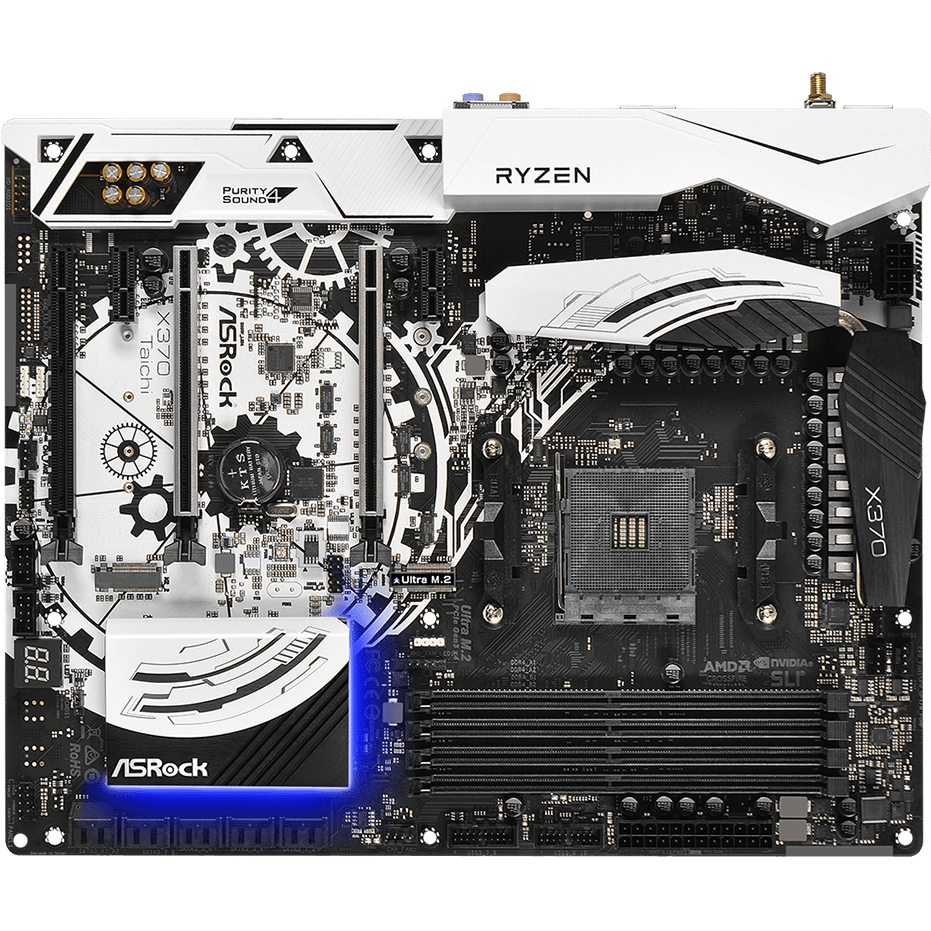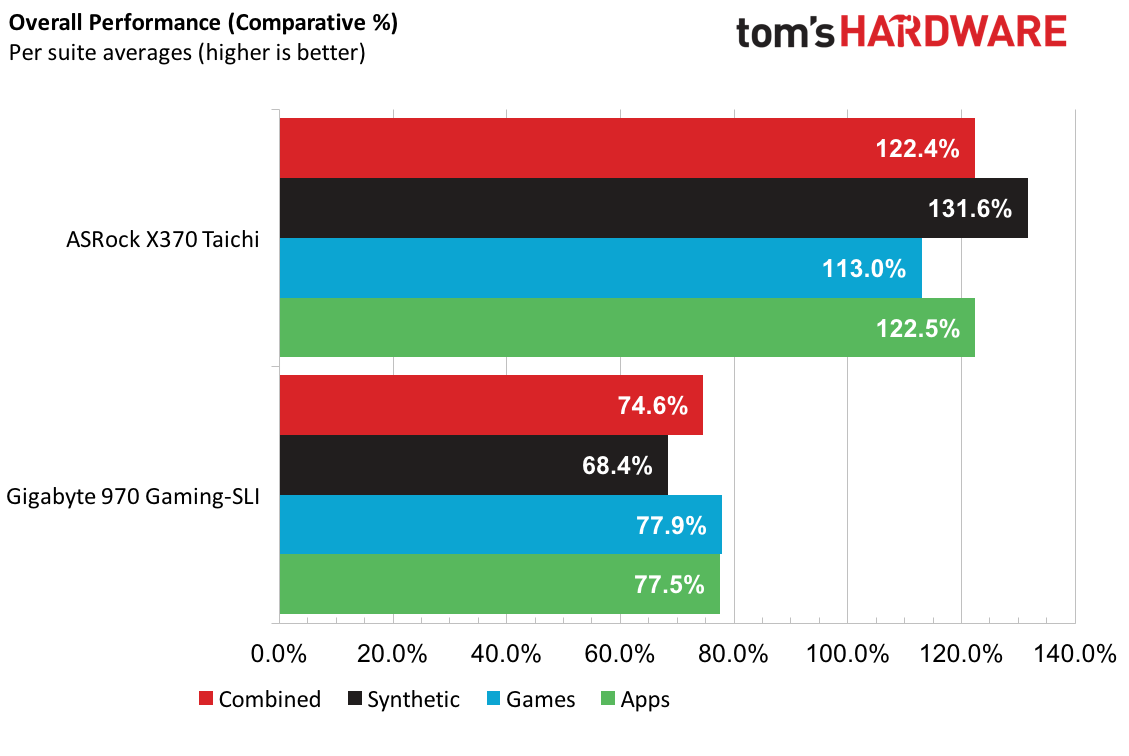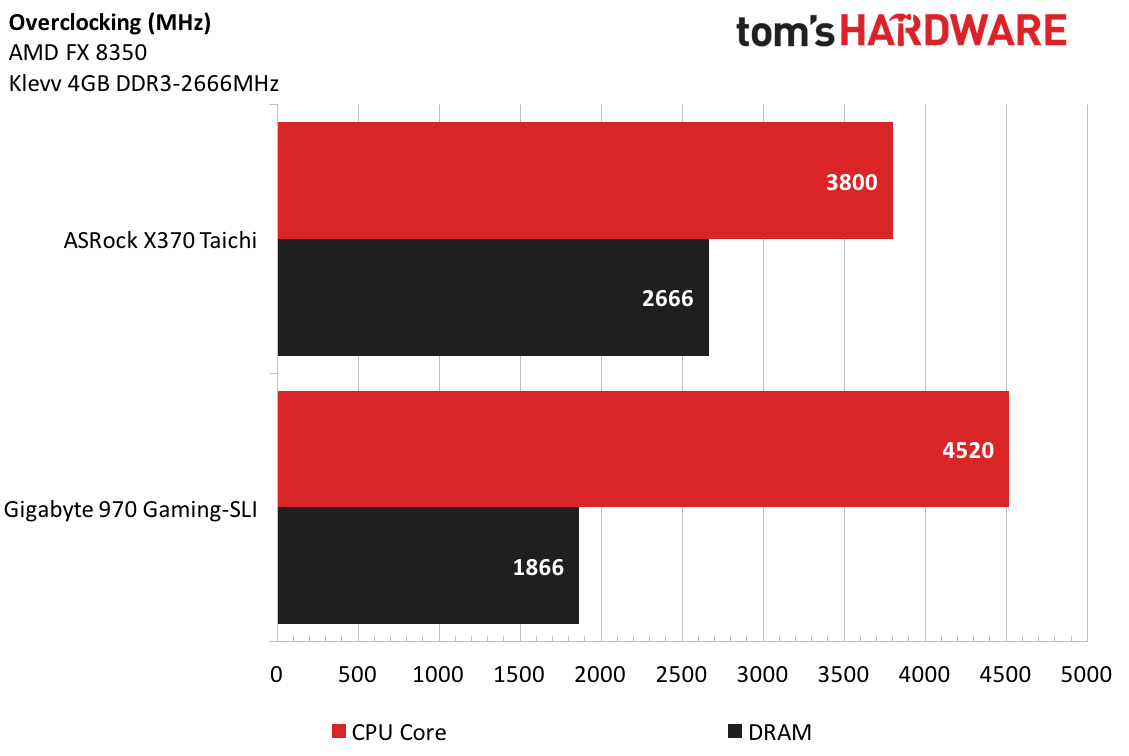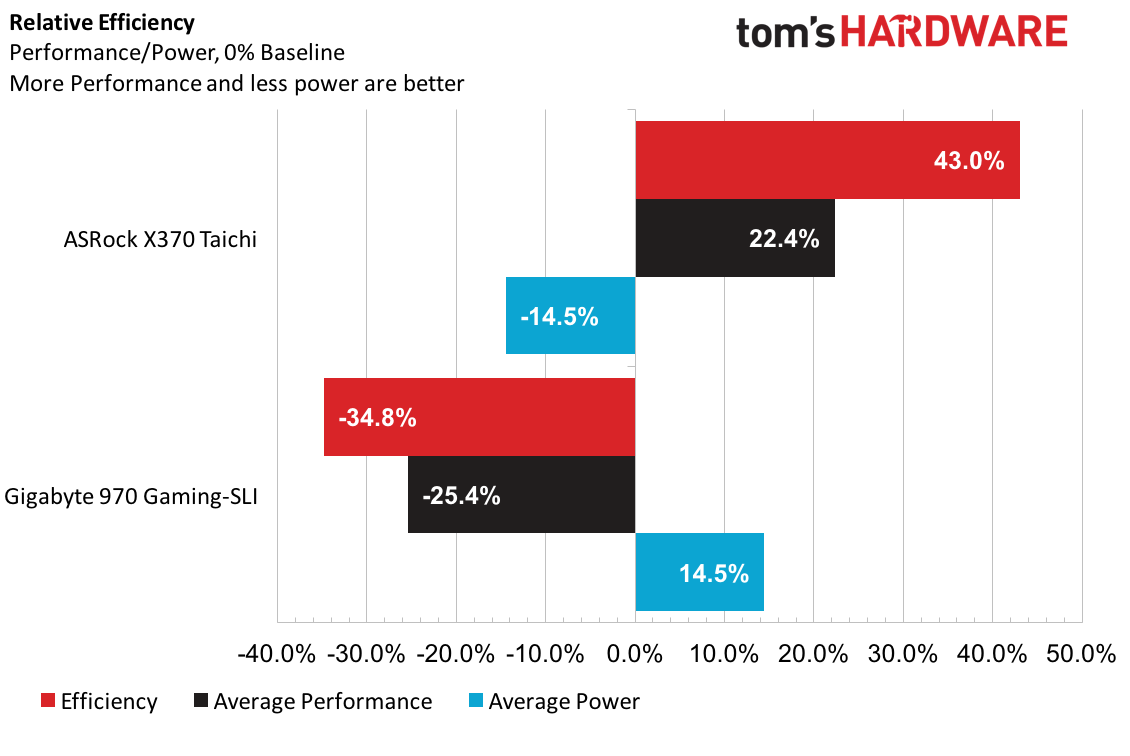ASRock X370 Taichi AMD Ryzen Socket AM4 ATX Motherboard Review
This is the first X370 motherboard in our AM4 review series. Is ASRocks' X370 Taichi the answer for those wanting to jump into the deep end of Zen?
Why you can trust Tom's Hardware
Test Results And Final Analysis
We'll be comparing other X370 boards over time, but since this is the first, we want to see how far AMD has come, so we'll be comparing the Taichi to our original AMD platform.
Test Results: Synthetics and Apps
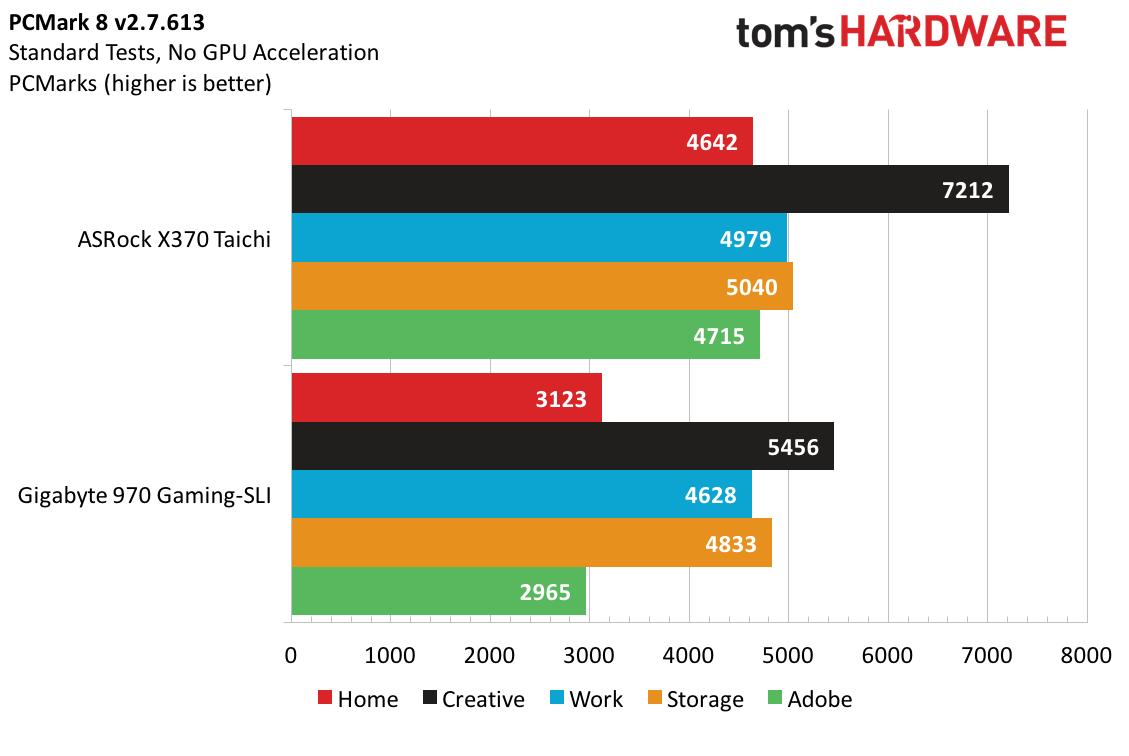
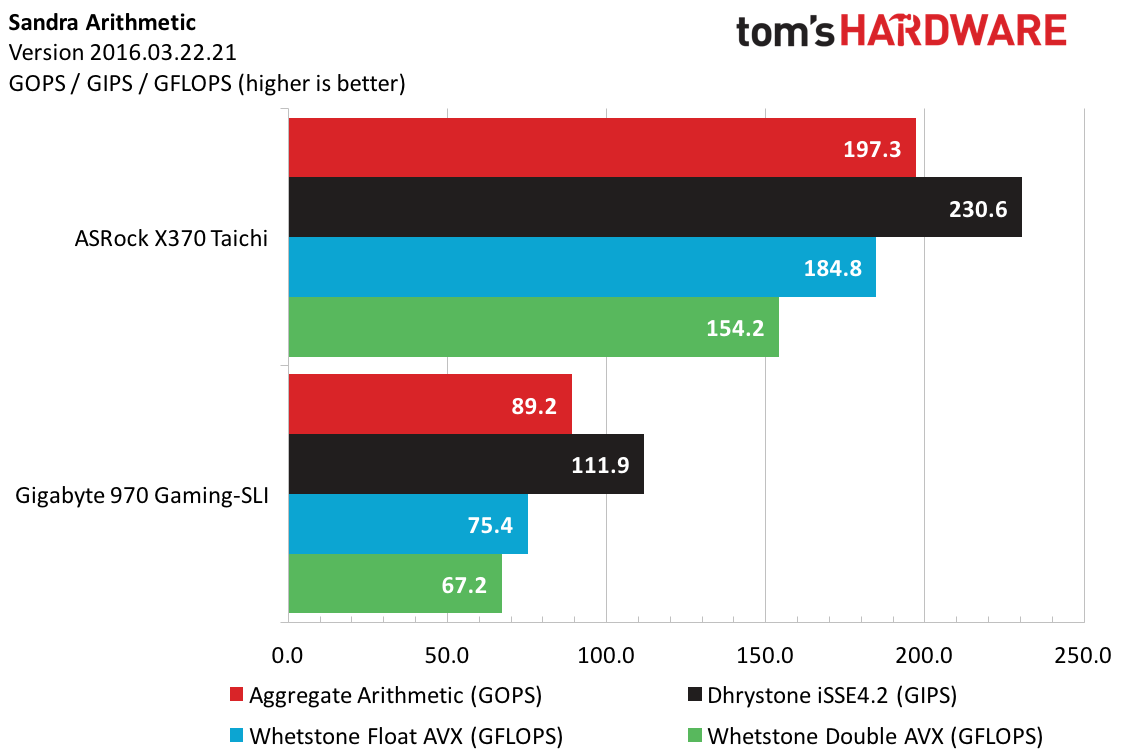
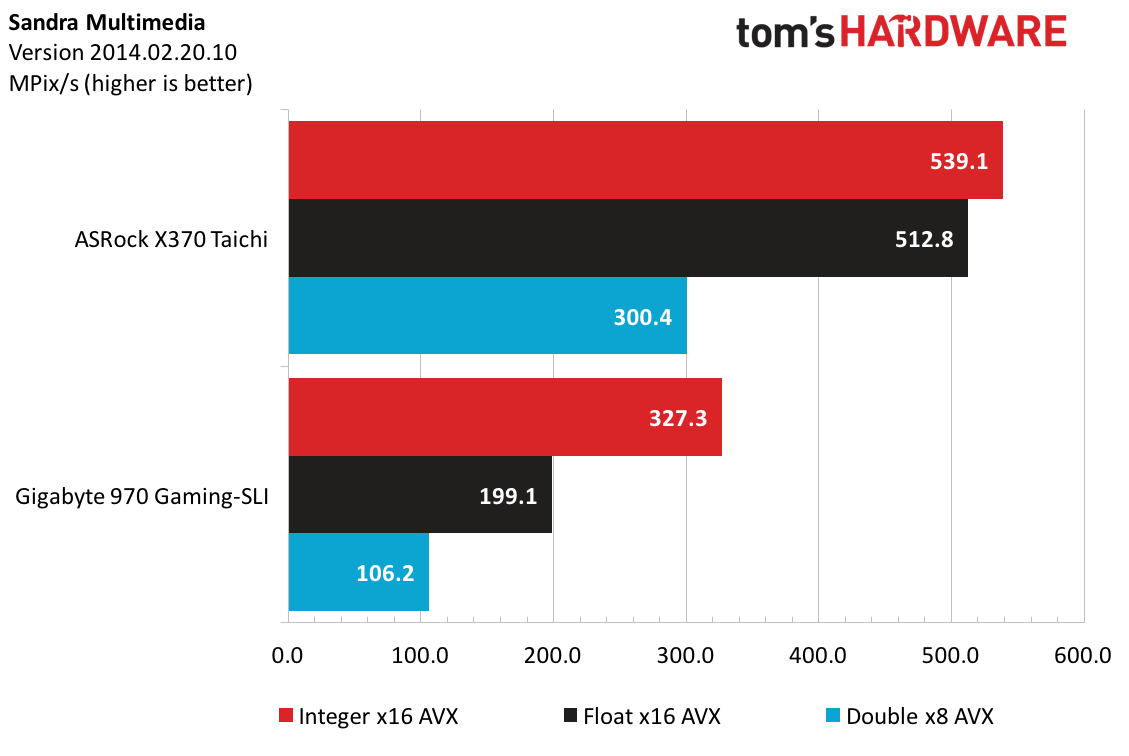
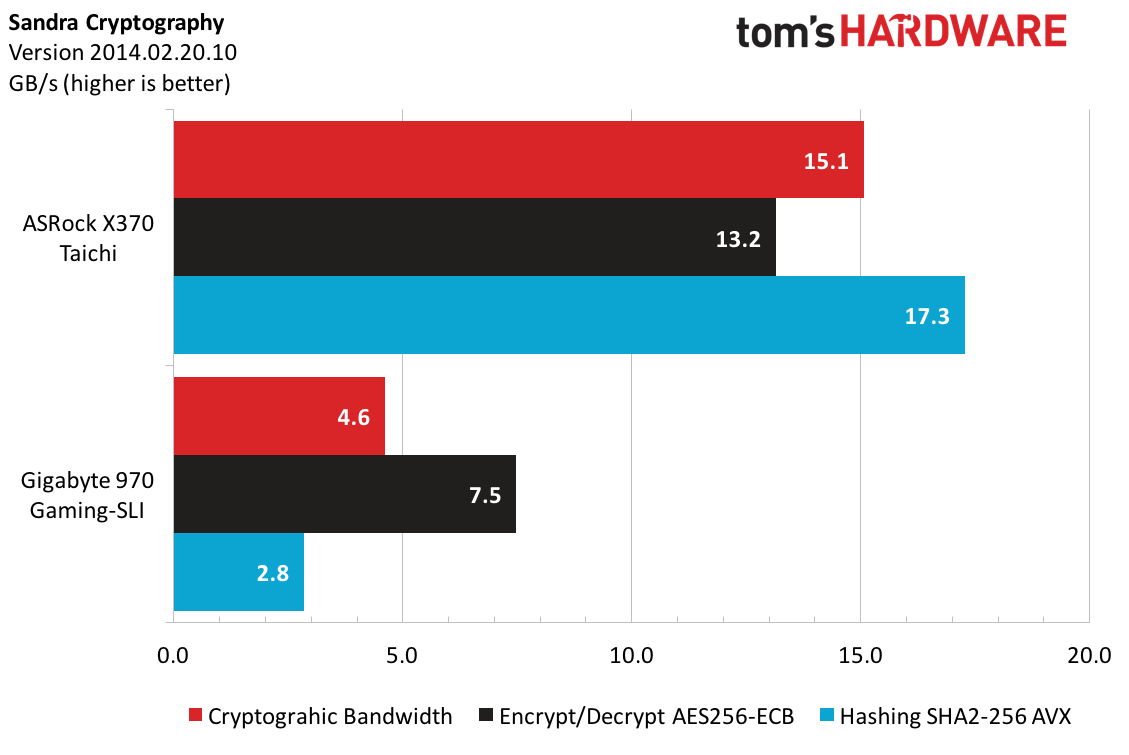


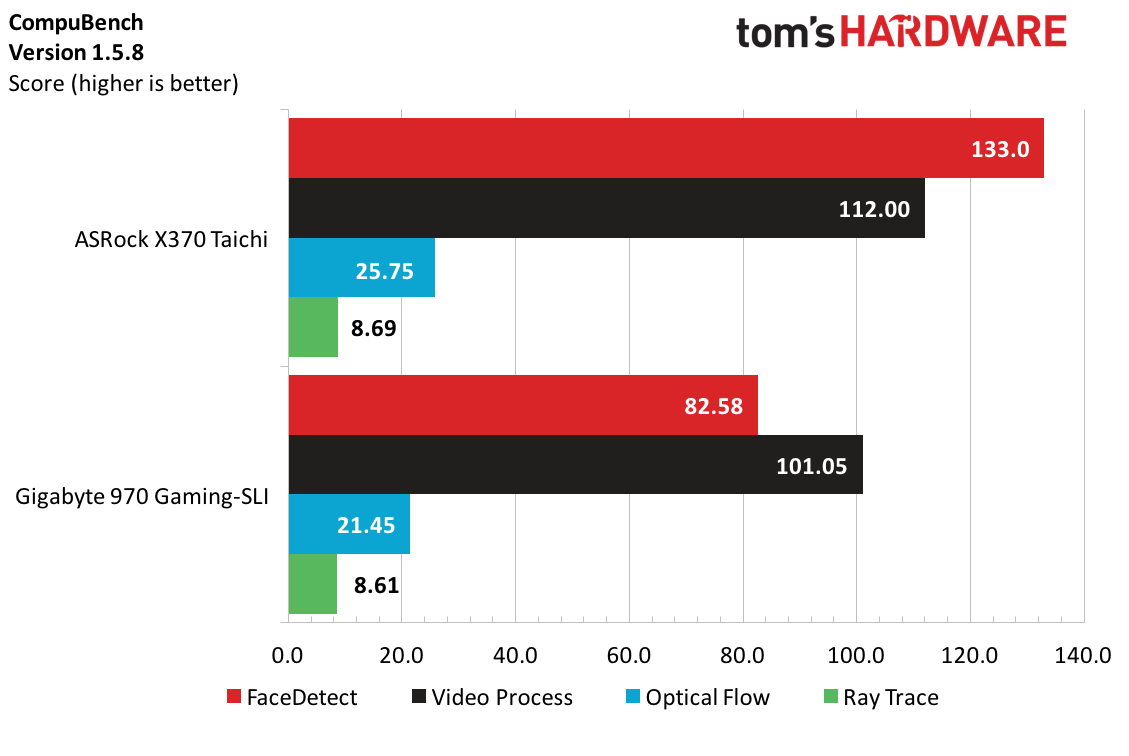

Surprisingly, the AMD 970 system can keep pace with the X370 in the PCMark Work and Storage benchmarks despite having a relatively antiquated processor and storage solution. However, X370 decides to shift gears and starts to annihilate its older brother in the remaining PCMark workloads by upwards of 33%. The ASRock X370 Taichi and 1700X continue to pour salt into the AMD 970’s wounds by more than doubling the AMD 970 scores in Sandra Arithmetic and tripling Multimedia and some Cryptographic metrics. The FX-8350 is no slouch, running 500MHz faster than the 1700X, but the Zen architecture is just that much more efficient.
An interesting observation with Cinebench: single-threaded performance matches the marketed claim of 40% better instructions per cycle, although having twice as many threads available doesn’t compound that IPS gain across all threads and cores.
Compubench right now is configured to use the GPUs for OpenCL performance, and the AMD 7970 manages to hang on in some workloads but obviously shows its age.

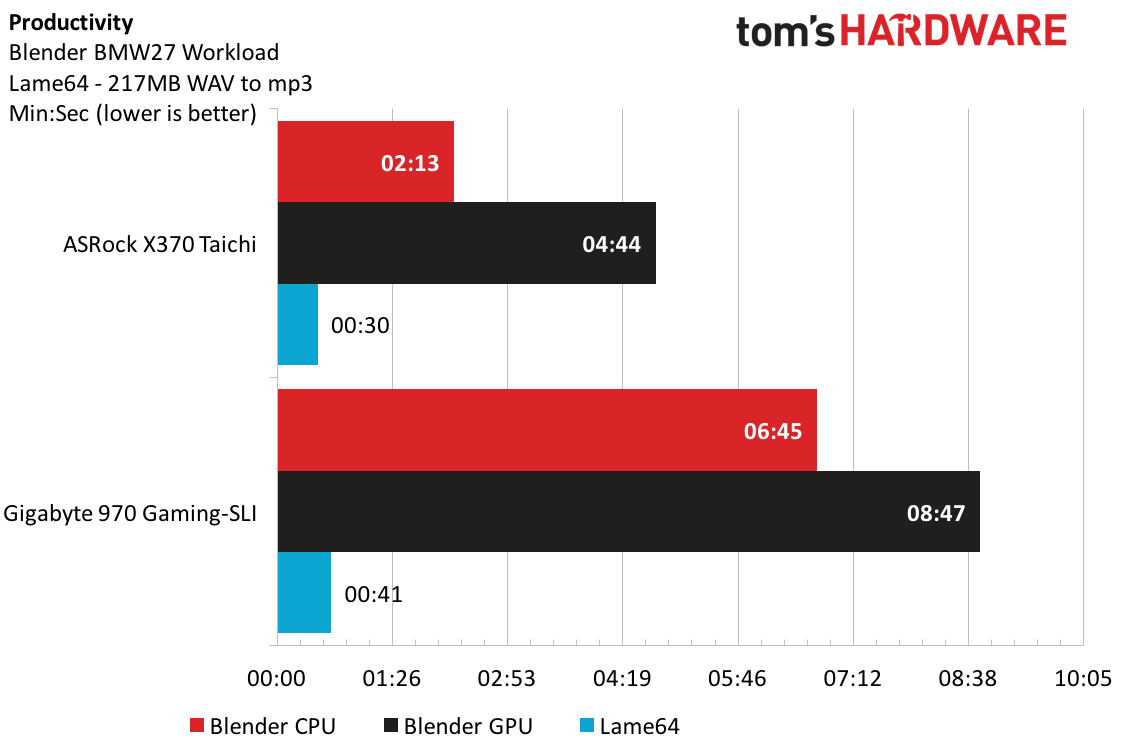

Many testers have claimed that Ryzen is a great workstation processor and this Handbrake result only solidifies that claim by cutting the render time by more than half. Blender shows similar trends with the CPU render taking one third less time to complete. Compression only seals the deal in real world applications.
Test Results: 3DMark and Games
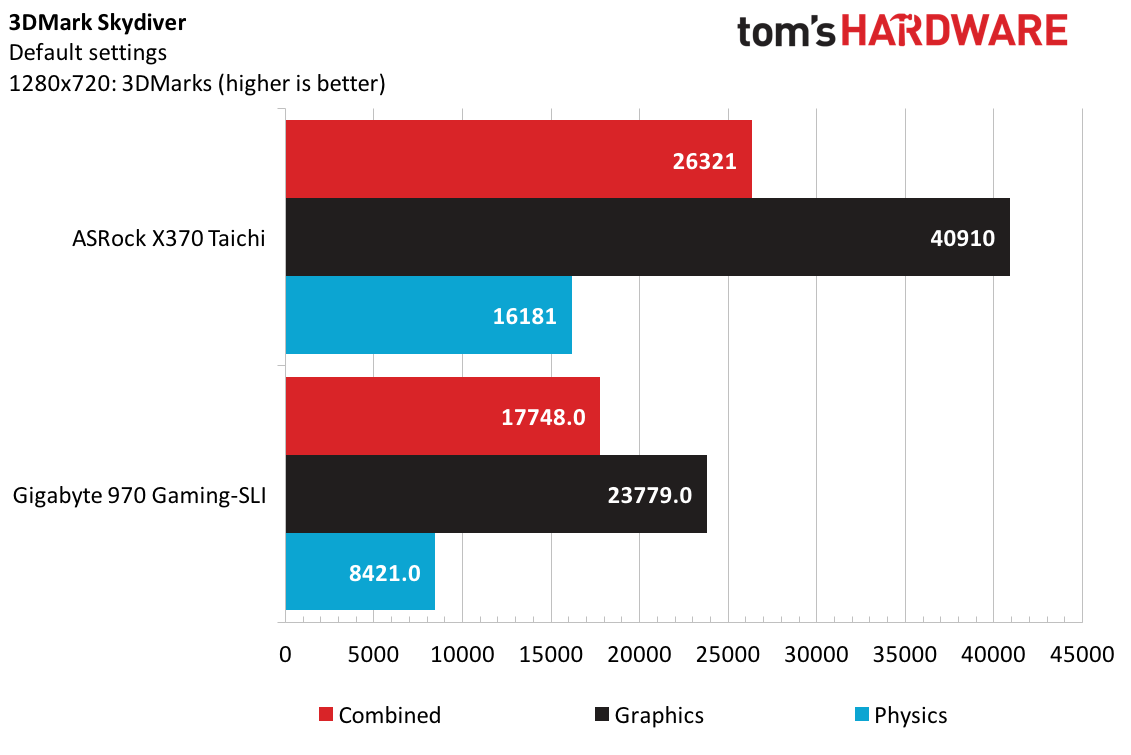
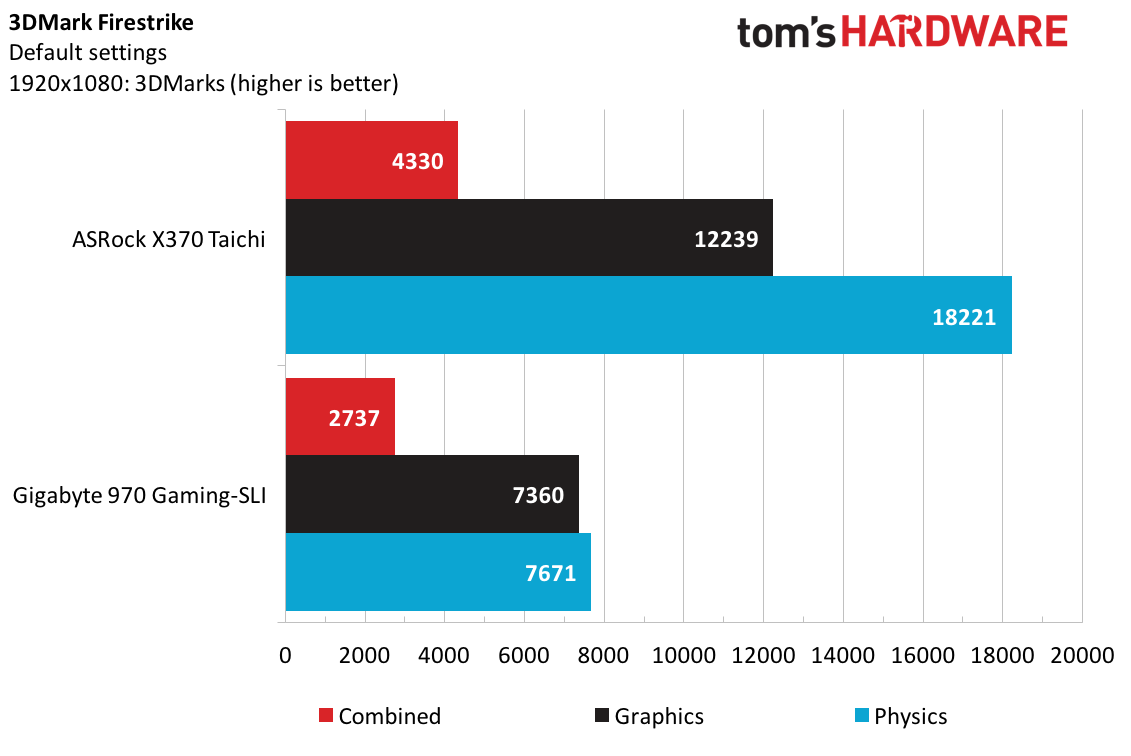
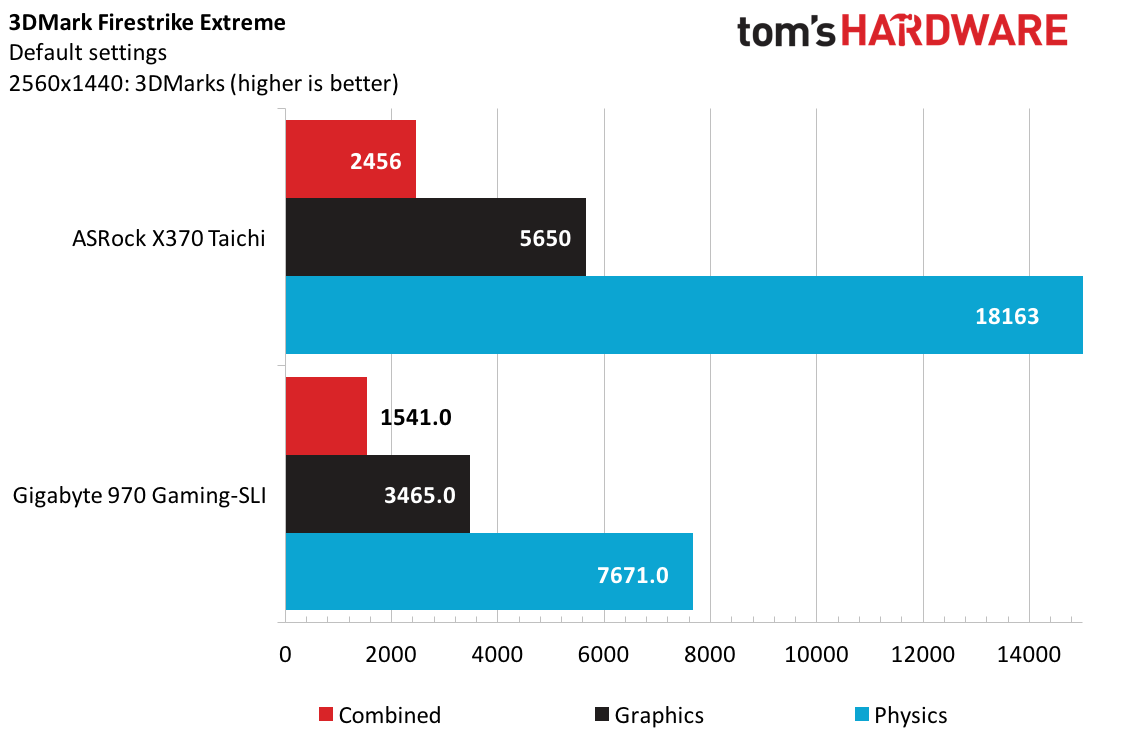
To be honest, these 3DMark results are comical. The AMD 7970 is leagues behind the GTX 970 in age, and only as I start ramping up the resolution and detail does the gap shrink. Standard Firestrike appears to be the AMD 7970s tipping point but the GTX 970 shows around 20 FPS while running Firestrike Extreme.

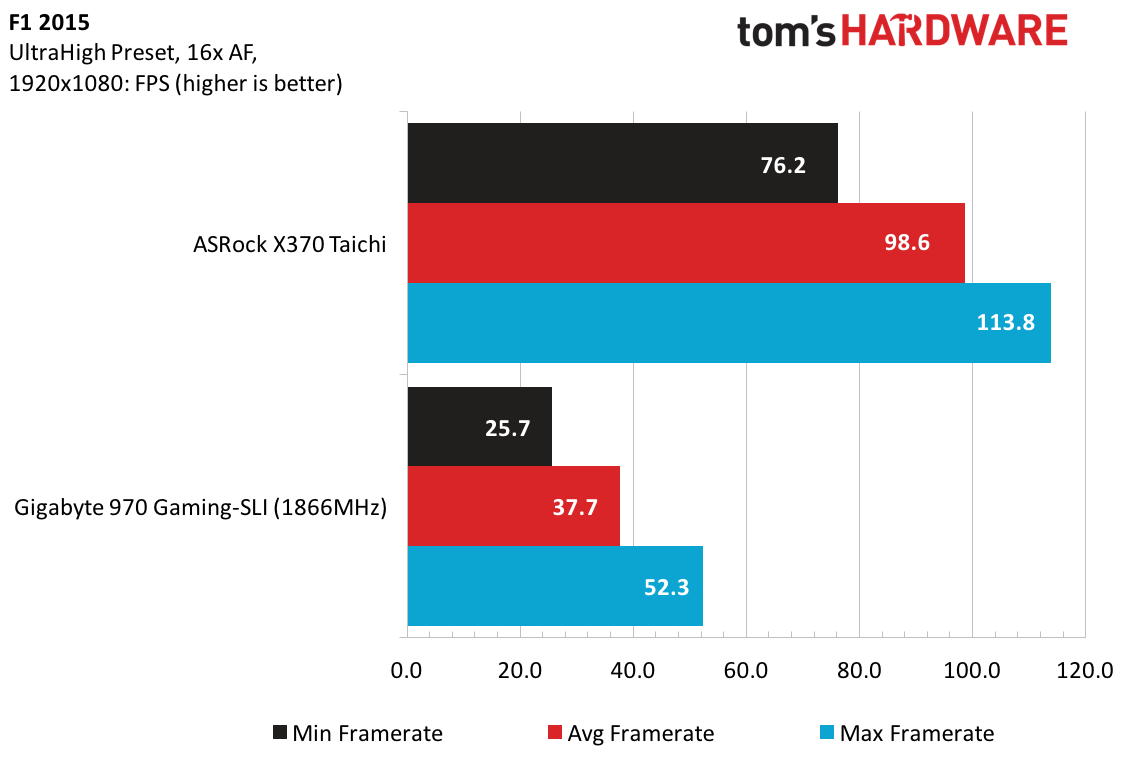
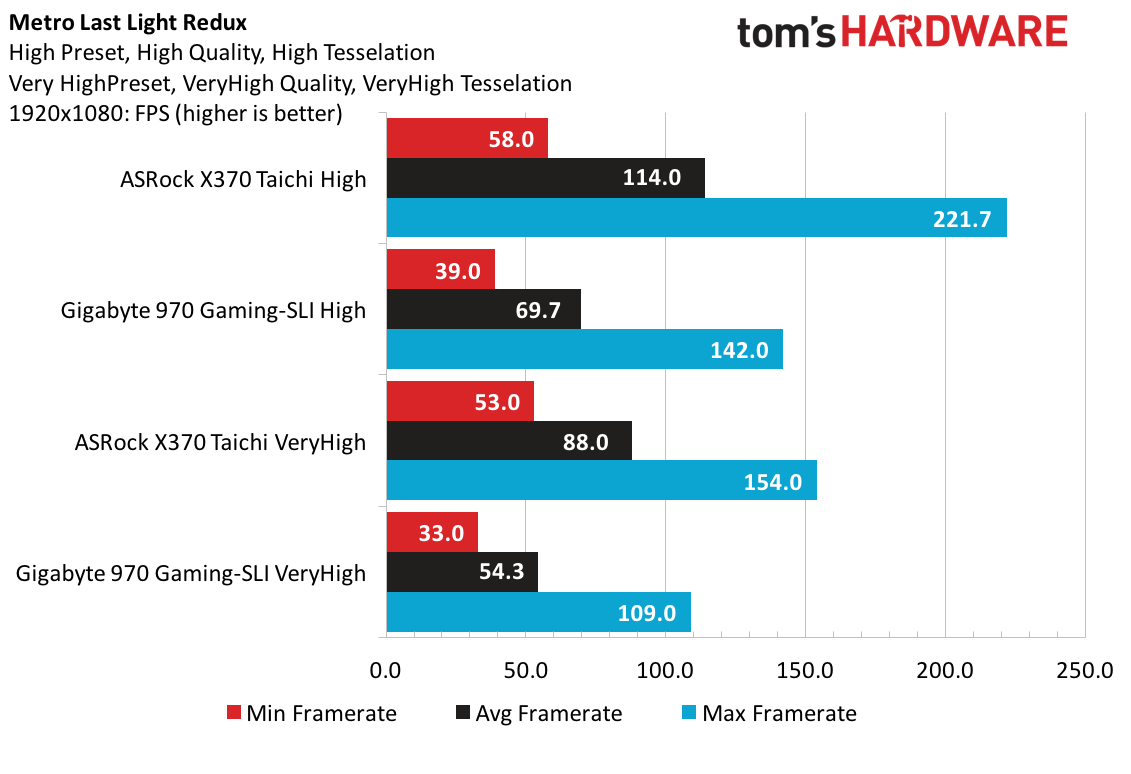
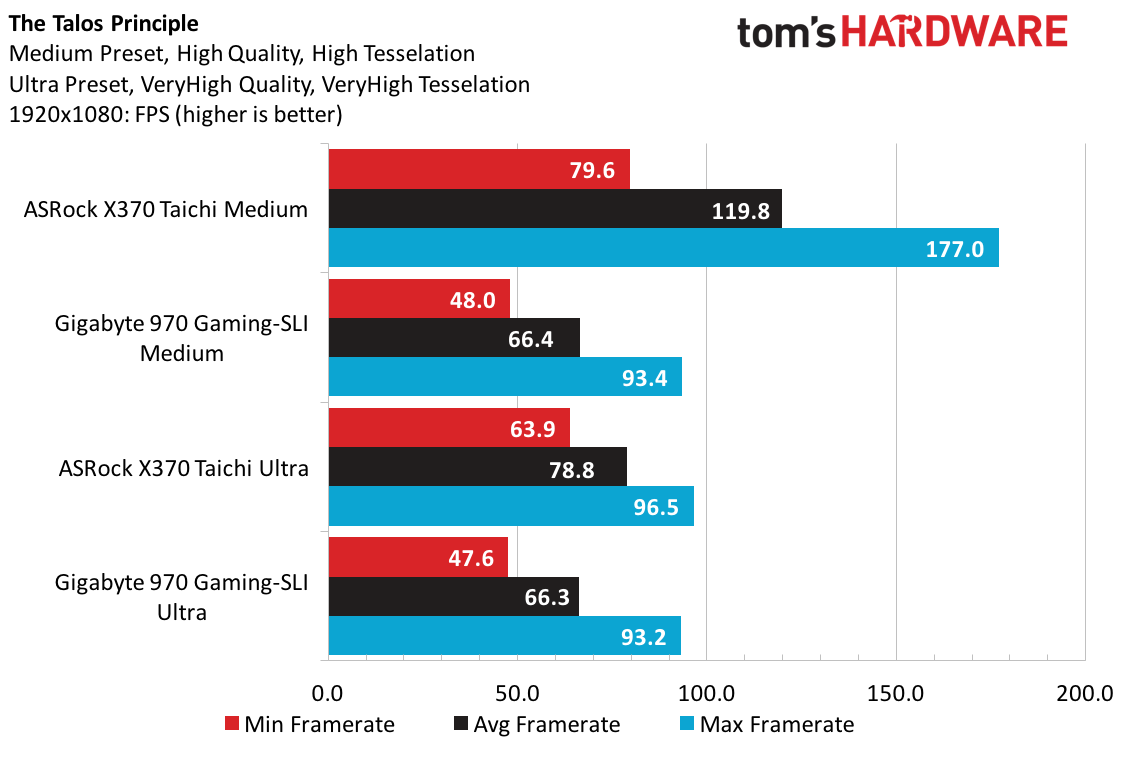
In Ashes of the Singularity, we see a similar trend, and at high settings the ASRock X370 setup gains 20 FPS. With the move to Crazy settings, the lead shrinks to less than 10 FPS with signs of bottlenecking. Again, F1 2015 shows barely playable framerates with the AMD 970 system, but a smooth experience with the X370 system. As I crawl through the tunnels in Metro Last Light, the ASRock X370 Taichi system operates better at Very High than the AMD 970 system at High detail settings. Still, both GPUs provide playable rates, though the GTX 970 is clearly smoother. The Talos Principle has been fixed in the latest version of the test image and again the X370/GTX 970 combo provides better framerates at higher detail settings than my old test bench.
Get Tom's Hardware's best news and in-depth reviews, straight to your inbox.
It is no surprise to anyone reading this article that the ASRock X370 Taichi system equipped with 1700X and GTX 970 is going to decimate a five-year-old computer. Synthetics are showing about a 60% delta between both systems, whereas the games are only separated by 35%.
Overclocking, Thermals, and Power
Given the infancy of Zen in consumer hands, there is a lot of conjecture and confusion among internet message boards across the entire spectrum of expertise. Our usual software tools for monitoring voltages and temperatures are no longer functional, and AMD's Ryzen Master software requires settings that we honestly don't have time to diagnose and properly analyze. Upon Paul Alcorn's (our CPU reviewer) recommendation, AIDA 64 beta provides the data presented in this article.


Our trusty Kill-A-Watt doesn't care if it's connected to a refrigerator or a high-end computer; watts are watts. While running idle, the X370 Taichi coupled with the Ryzen 1700X only draw a respectful 69W. Temperatures are slightly confusing, though expected, at 29°C for the CPU and 48°C for the CPU1 diode.
Loading up Prime95 for maximum CPU power pulls 184W from the wall while the delta between CPU and CPU1 diode increases to 30°C. Having reinstalled our cooler a couple of times, we don't know which value to trust, so we trudge forward.
Loading up FurMark in parallel on our 970 system ends up drawing 404W and the CPU temperature delta still sits at 30°C. Looking back at the AMD 970 system data, we were using a much smaller power supply so we were unable to grab full system stress data. Regardless, this 1700X sample saves nearly 90W when running Prime95 when compared to full load with the FX-8350. Given that the 32nm chip has a TDP of 125W compared to the 1700X’s 95W, the ASRock X370 Taichi platform is far more efficient than its predecessor.
As we tread into lightly understood waters, overclocking the 1700X was both easy and difficult at the same time. Various outlets describe some safe recommendations and claim success in the realm of 3.8-4.0GHz utilizing air cooling. Paul Alcorn could achieve 4.0GHz using watercooling for his sample, so we are optimistic while deploying the Nocuta NH-D15 for the AM4 socket. Given the specific voltage and temperature monitoring of the Zen architecture, 1.35 to 1.4V set point appears to be the safe range for these processors. Since we need this sample to survive for the long haul, we're handicapping ourselves to 1.3875V and a target frequency of 4GHz.

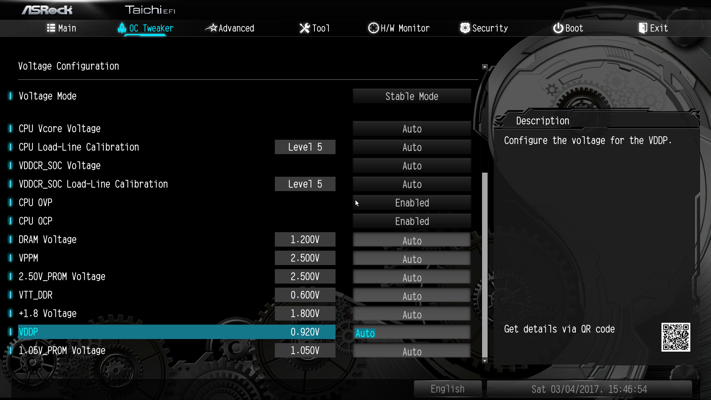
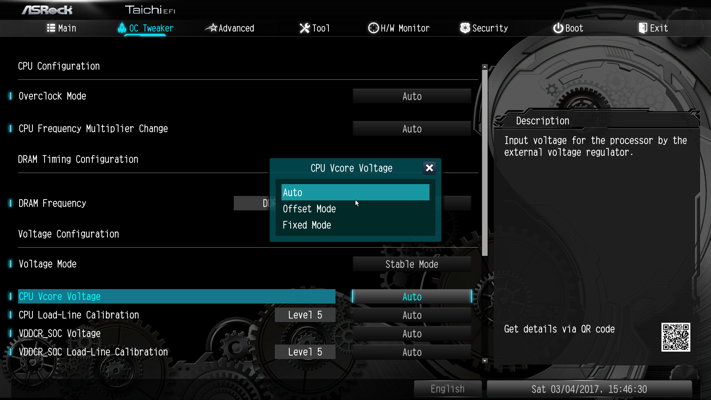

The ASRock X370 Taichi is well suited for overclocking, given the 12+4 phase design and ample options provided through the UEFI. Having utilized loadline settings heavily during testing for our C232 article, step one was to increase the clock multiplier and tweak this setting by one adjustment. We hit 3.8GHz right off the bat without even breaking a sweat. Both CPU temperatures were solid and we felt jumping up to 4.0GHz would be straightforward.
Wrong.
Windows will load, but we got no response from the system after the boot animation stopped spinning. The X370 Taichi enables both fixed and offset voltage settings, but we were very cautious of the offset option given the ambiguous definition and units of the adjustments. Upping the voltage to 1.3875 using fixed voltage enabled us to get to the idle Windows screen, but even adjusting the loadline up to level two didn't improve the situation. Dialing back down to 3.9GHz got Prime95 up and running, but within an hour of runtime we were back to the black screen. Rather than damage our processor with more voltage, we will have to settle for 3.8GHz using slightly more aggressive voltages and loadline than stock settings.
As for memory, these boring Crucial DDR4-2400 could bump up to DDR4-2666MHz with a single click press of the “+” key. Timings are available through the AMD CBS menu in the UEFI, and we just dialed the tCL back to stock 2400 settings. We do have newer memory modules en route, so we look forward to putting these green sticks back in the boring workstation build.
Efficiency, Value, and Verdict
With the performance gap of nearly 50% for both platforms and the latest AMD release drawing nearly 30% less power, the efficiency discussion is not even a fair comparison. For those builders hoping to jump from an older AMD system to another, the power savings alone could justify the cost. For gamers though, sometimes efficiency has little sway in the entire equation.
Prices are likely to fluctuate for a while. Comparing several online retailers’ prices for this ASRock X370 Taichi, it can be found on sale for as low as $199.99, and the older 970 chipset boards are starting to drop in price or go out of stock. Despite the lackluster numbers, the performance per dollar calculation goes to the older platform. We still wouldn’t recommend going out and specifically buying the AMD 970 boards because this “value” comes at the cost modern features, electricity, and performance.
The ASRock X370 Taichi is clearly a top tier motherboard, providing stability and performance out of this new ecosystem and AM4 socket. Unfortunately our processor sample did not win the silicon lottery, though manufacturing processes improve daily. There is no doubt that both AMD and third party developers are feverishly tweaking drivers and firmware to ensure that Zen is running as optimally as possible. We look forward to revisiting this motherboard once the dust has settled and we've reviewed others. And we can hardly wait for B350 for single GPU deployments and the quest to win the value title back from the i7-7700k.
MORE: Best Motherboards
MORE: How To Choose A Motherboard
MORE: All Motherboard Content
-
elbert Fine motherboard with plenty of options for the average market. I've looked over ASRock's am4 lineup and think they skipped doing their customer wants. AMD customer aren't the same as Intel's. ASRock's am4 line is good but lacks a single model with old school PCI. My last two motherboard's were ASRock's a fine and very stable plateform to build off. Just hope the see AMD's customer's still desire atleast one old school slot.Reply -
tslot05qsljgo9ed No motherboard ECC support no buying.Reply
All Ryzen's have ECC available so to have motherboards purposely remove the ECC feature is disgraceful.
24/7 systems like NAS and HTPC need ECC. -
LiviuTM Where does it say "no ECC"? Have you checked ASRock's website?Reply
http://www.asrock.com/MB/AMD/X370%20Taichi/index.us.asp#Specification -
eldragon0 Reply19433719 said:Fine motherboard with plenty of options for the average market. I've looked over ASRock's am4 lineup and think they skipped doing their customer wants. AMD customer aren't the same as Intel's. ASRock's am4 line is good but lacks a single model with old school PCI. My last two motherboard's were ASRock's a fine and very stable plateform to build off. Just hope the see AMD's customer's still desire atleast one old school slot.
Where in the world are you seeing customers want an oldschool PCI lane? You know you can put a pcie 1x 4x and 8x card in a 16x slot right? If you're talking about legacy PCI please go out and get new hardware. AMD's customers are the exact same as Intel's don't push your niche needs onto a consumer base as a whole. -
epobirs The most interesting that I first notice is that AMD is first to have USB 3.1 Gen 2 as a native chip set feature. Kaby Lake was a disappointment in that regard.Reply -
elbert Reply
I'm talking about legacy PCI and I'm not pushing a niche. ASUS, MSI, and Gigabyte all three offer a motherboard with 2 PCI slots. I'm thinking tomahawk unless ASRock has one coming.19433922 said:19433719 said:Fine motherboard with plenty of options for the average market. I've looked over ASRock's am4 lineup and think they skipped doing their customer wants. AMD customer aren't the same as Intel's. ASRock's am4 line is good but lacks a single model with old school PCI. My last two motherboard's were ASRock's a fine and very stable plateform to build off. Just hope the see AMD's customer's still desire atleast one old school slot.
Where in the world are you seeing customers want an oldschool PCI lane? You know you can put a pcie 1x 4x and 8x card in a 16x slot right? If you're talking about legacy PCI please go out and get new hardware. AMD's customers are the exact same as Intel's don't push your niche needs onto a consumer base as a whole.
https://pcpartpicker.com/product/fPDzK8/asus-prime-b350-plus-atx-am4-motherboard-prime-b350-plus
https://pcpartpicker.com/product/Y4kwrH/msi-b350-tomahawk-atx-am4-motherboard-b350-tomahawk
https://pcpartpicker.com/product/HQvZxr/gigabyte-ga-ab350m-d3h-micro-atx-am4-motherboard-ga-ab350m-d3h
-
pjgowtham why " could have done without the wifi " in the cons ?Reply
isnt it a good thing that AsRock added wireless 802.11ac and BT 4.2 on the board for people who are looking to purchase it seperately? -
the nerd 389 Regarding temperatures, Ryzen adds 20 C to the CPU diode temperature over what it physically measures on that CPU.Reply
See:
http://www.tomshardware.com/news/amd-ryzen-7-1800x-update,33900.html -
spdragoo Reply19434278 said:why " could have done without the wifi " in the cons ?
isnt it a good thing that AsRock added wireless 802.11ac and BT 4.2 on the board for people who are looking to purchase it seperately?
Depends on how many people are using it. I think it's safe to say that the majority of desktop PC users don't have a need for Wi-Fi and/or Bluetooth for their desktop PC. Personally, my desktop PC sits in the same room as my cable modem & router, with maybe 3 feet/1 meter separating the router & PC. So if I were to build a new PC, & had the choice between 2 motherboards that -- aside from Wi-Fi & Bluetooth had the same specs -- I would most likely pick the one without Wi-Fi & Bluetooth, as it would most likely a) cost less than the other board, or b) would have some additional feature because there was more room on the motherboard for other silicon (i.e. extra SATA/eSATA/M.2 slots, better onboard sound, etc.). -
tslot05qsljgo9ed Quote: Where does it say "no ECC"? Have you checked ASRock's website?Reply
http://www.asrock.com/MB/AMD/X370%20Taichi/index.us.asp#Specification
Nowhere does it say it supports ECC. If it does not state it supports then it does not support ECC.
